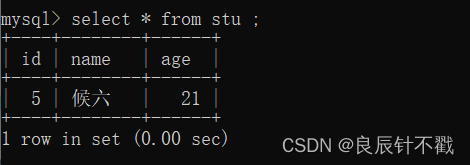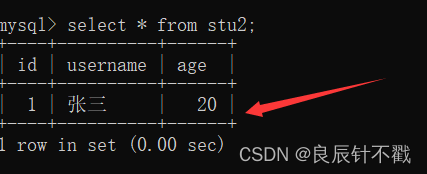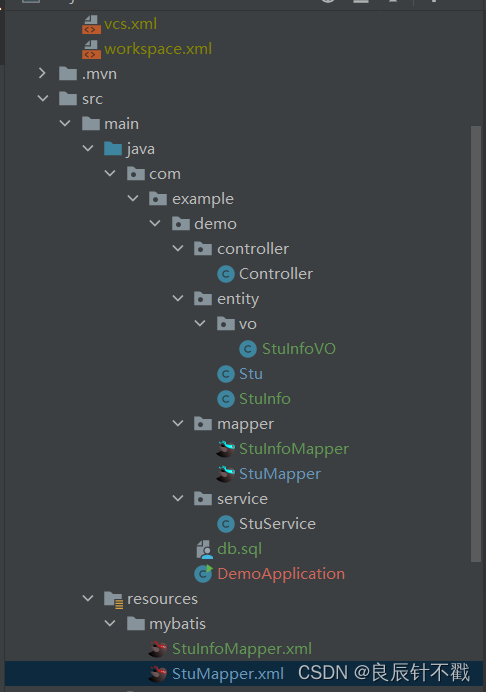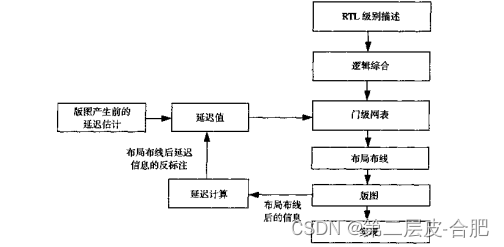前言:
大家好,我是良辰丫,今天还是我们的mybatis的学习,主要内容有两个占位符,sql注入问题,like模糊匹配,以及多表查询等,不断提升我们的编程能力,加油哈! ! !💌💌💌
🧑个人主页:良辰针不戳
📖所属专栏:javaEE进阶篇之框架学习
🍎励志语句:生活也许会让我们遍体鳞伤,但最终这些伤口会成为我们一辈子的财富。
💦期待大家三连,关注,点赞,收藏。
💌作者能力有限,可能也会出错,欢迎大家指正。
💞愿与君为伴,共探Java汪洋大海。

目录
- 1. 参数占位符 #{} 和 ${}
- 2. $符号处理关键字
- 3. sql注入问题
- 4. like模糊匹配
- 4.1 like与%连接通过#号预处理
- 4.2 like与%连接通过$符号处理
- 4.3 使用sql的拼接函数concat处理like
- 5. sql字段与java后端字段不统一
- 5.1 使用resultMap映射
- 5.2 通过mysql的as别名
- 7. 多表联查
1. 参数占位符 #{} 和 ${}
- #{}:预编译处理。
- ${}:字符直接替换。
- 预编译处理:MyBatis 在处理#{}时,会将 SQL 中的 #{} 替换为?号,使⽤ PreparedStatement
的 set ⽅法来赋值。- 直接替换:是MyBatis 在处理 ${} 时,就是把 ${} 替换成变量的值。
- 整型直接使用#和$都可以正常使用,但是字符串就会出现问题,那么接下来我们就使用字符串进行举例.
创建一个接口字段 :
Stu getStuName(@Param("name") String name);
xml配置,通过#号处理字段
<select id="getStuName" resultType="com.example.demo.entity.Stu">select * from stu where name = #{name}</select>
测试单元
@Testvoid getStuName() {Stu stu = stuMapper.getStuName("李白");Assertions.assertEquals(10,stu.getId());}测试通过

接下来使用$号
<select id="getStuName" resultType="com.example.demo.entity.Stu">select * from stu where name = ${name}</select>
这个时候就会出现问题了,字符串是直接替换没有加引号.

我们如果想要去使用$去处理字符串也可以,我们只需要再xml里面的字段加上引号即可.
2. $符号处理关键字
使用$可以处理关键字,比如我们sql的升序降序关键字,因为$符号是直接替换,重要的事情要多次说,这样方便大家记忆.
创建接口字段
List<Stu> getStuAll(String str);
xml配置文件
<select id="getStuAll" resultType="com.example.demo.entity.Stu">select * from stu order by id ${str};</select>
测试单元
@Testvoid getStuAll() {List<Stu> list = stuMapper.getStuAll("desc");}

如果我们传关键字的时候使用#号就会报错.


3. sql注入问题
- 接下来我们来模拟一个登录操作,来简单描述一下我们的注入问题
- 我们首先需要把stu表中只留下一个数据,否则属性注入会出现问题.

定义接口信息
Stu login(@Param("id") Integer id,@Param("name") String name);
xml配置
<select id="login" resultType="com.example.demo.entity.Stu">select * from stu where id = #{id} and name = #{name}</select>
- #是不会出现属性注入的.
- 我们主要看$符号
$符号在处理字符串的时候需要给它加引号,sql里面单引号和双引号都可以.
xml信息
<select id="login" resultType="com.example.demo.entity.Stu">select * from stu where id = ${id} and name = '${name}'</select>
测试单元
@Testvoid login() {int id = 5;String name = "候六";//String name = "' or 1='1";Stu stu = stuMapper.login(id,name);if(stu != null){System.out.println("登录成功");}else {System.out.println("登录失败");}}

如果我们把name属性的key值写成下面的呢?这样就会出现属性注入问题.
@Testvoid login() {int id = 5;String name = "' or 1='1";Stu stu = stuMapper.login(id,name);if(stu != null){System.out.println("登录成功");}else {System.out.println("登录失败");}}
我们会惊奇的发现这样也能查到数据库信息.


为什么会出现上面的问题呢?
- $符号是直接替换,并没有通过预处理,因此$符号会把传入的参数当成sql语句.
- 此时参数与原来的sql语句进行拼接.
上面出现了sql注入,如果我们换成了#号呢?
<select id="login" resultType="com.example.demo.entity.Stu">select * from stu where id = #{id} and name = #{name}
<!-- select * from stu where id = ${id} and name = '${name}'--></select>
测试单元
@Testvoid login() {int id = 5;//String name = "候六";String name = "' or 1='1";Stu stu = stuMapper.login(id,name);if(stu != null){System.out.println("登录成功");}else {System.out.println("登录失败");}}

为什么#号不会出现sql注入,因为#号是预处理,它只会把那个句子当成一个value值,不会当成sql语句
4. like模糊匹配
like模式匹配会出问题?
- like与%直接连接通过#号预处理会失败.
- like与%直接连接通过$符号不会编译错误,但是可能出现sql注入.
4.1 like与%连接通过#号预处理
List<Stu> getStuSel(String str);
<select id="getStuSel" resultType="com.example.demo.entity.Stu">select * from stu where name like '#{str}%'</select>
@Testvoid getStuSel() {String str = "李";stuMapper.getStuSel(str);}
我们惊奇的发现此时使用#号出错了,与%联合使用并没有真正的做到拼接作用.

4.2 like与%连接通过$符号处理
如果我们把#号改成$号,会测试成功嘛?

此时竟然测试成功.

- 虽然$符号测试成功,但是我们在上面了解到$会有sql注入的问题,那么接下来我们就要使用sql中的拼接函数concat实现我们相应的功能.
- 这样就能保证我们既使用#号,又可以成功查询
4.3 使用sql的拼接函数concat处理like
<select id="getStuSel" resultType="com.example.demo.entity.Stu">
<!-- select * from stu where name like '${str}%'-->select * from stu where name like concat(#{str},'%')</select>

5. sql字段与java后端字段不统一
如果我们java后端属性和sql的字段名字不统一的时候会出现什么问题呢?我们首先另外创一个表.
create table stu2(id int primary key auto_increment,username varchar(20),age int);
注意我们这个表是username属性,但是在我们java中是name属性
然后添加一条数据.
insert into stu2 values(null,'张三',20);

添加接口属性
Stu getStuId2(@Param("id") Integer id);
添加xml配置
<select id="getStuId2" resultType="com.example.demo.entity.Stu">select * from stu2 where id=${id}</select>
测试单元
@Testvoid getStuId2() {Stu stu = stuMapper.getStuId2(1);System.out.println(stu);}
运行单元测试代码,此时我们发现后端获取到的name属性为null.

5.1 使用resultMap映射
这个时候我们需要使用resultMap映射,把数据库的属性和java的属性一一映射.
添加接口方法.
Stu getStuId2(@Param("id") Integer id);
映射字段.
<resultMap id="Map" type="com.example.demo.entity.Stu"><id column="id" property="id"></id><result column="username" property="name"></result><result column="age" property="age"></result></resultMap>
- id表示主键.
- column表示数据库的字段名.
- id = "Map"中的Map是标识.
- type后面添加的是要映射的实体类.
- property是程序中的属性名
- result普通的字段和属性,也就resultMap里的一个标签.
xml配置
<select id="getStuId2" resultMap="Map">select * from stu2 where id=${id}</select>

5.2 通过mysql的as别名
- resultMap映射中只映射name,在单表查询中没有问题,但是在多表查询有一定的问题.
- resultMap的方式比较复杂,有没有简单的方式呢?
mysql里面的as别名
<select id="getStuId2" resultType="com.example.demo.entity.Stu">select id,username as name,age from stu2 where id=${id}</select>

7. 多表联查
接下来我们创建一个学生信息表
create table stuInfo(stuId int not null,classInfo varchar(100),ident varchar(20)
);
在entity创建一个学生信息实体类StuInfo
package com.example.demo.entity;import lombok.Data;@Data
public class StuInfo {private int stuId;private String classInfo;private String ident;
}在entity包下面建一个包vo,vo里面创一个类StuInfoVO
package com.example.demo.entity.vo;import com.example.demo.entity.StuInfo;
import lombok.Data;@Data
public class StuInfoVO extends StuInfo {//不想写基础字段,可以去继承private String username;
}在mapper包里面创一个StuInfoMapper接口
package com.example.demo.mapper;import com.example.demo.entity.vo.StuInfoVO;
import org.apache.ibatis.annotations.Mapper;
import org.apache.ibatis.annotations.Param;@Mapper
public interface StuInfoMapper {StuInfoVO getById(@Param("id") Integer id);
}在资源文件的mybatis中添加一个配置文件StuInfoMapper.xml
<?xml version="1.0" encoding="UTF-8"?>
<!DOCTYPE mapper PUBLIC "-//mybatis.org//DTD Mapper 3.0//EN" "http://mybatis.org/dtd/mybatis-3-mapper.dtd">
<!--namespace是命名空间,表示实现哪个接口-->
<mapper namespace="com.example.demo.mapper.StuInfoMapper"><select id="getById" resultType="com.example.demo.entity.vo.StuInfoVO">select id,name,classInfo,ident from stu,stuInfo where stu.id = stuInfo.stuIdand stu.id = #{id}</select>
</mapper>
insert into stuInfo values(13,'计算机2020班','学生会主席');
<?xml version="1.0" encoding="UTF-8"?>
<!DOCTYPE mapper PUBLIC "-//mybatis.org//DTD Mapper 3.0//EN" "http://mybatis.org/dtd/mybatis-3-mapper.dtd">
<!--namespace是命名空间,表示实现哪个接口-->
<mapper namespace="com.example.demo.mapper.StuInfoMapper">
</mapper>
整体的目录结构.

接下来我们实现一个简单的联合查询
创建接口字段
StuInfoVO getById(@Param("id") Integer id);
xml文件配置
<select id="getById" resultType="com.example.demo.entity.vo.StuInfoVO">select id,name,classInfo,ident from stu,stuInfo where stu.id = stuInfo.stuIdand stu.id = #{id}</select>
测试单元
package com.example.demo.mapper;import com.example.demo.entity.vo.StuInfoVO;
import org.junit.jupiter.api.Test;
import org.springframework.beans.factory.annotation.Autowired;
import org.springframework.boot.test.context.SpringBootTest;import static org.junit.jupiter.api.Assertions.*;
@SpringBootTest
class StuInfoMapperTest {@Autowiredprivate StuInfoMapper stuInfoMapper;@Testvoid getById() {StuInfoVO stuInfoVO = stuInfoMapper.getById(13);System.out.println(stuInfoVO);}
}

通过继承的方式后端获取不到信息.

那么,接下来我们不使用继承
package com.example.demo.entity.vo;import com.example.demo.entity.StuInfo;
import lombok.Data;@Data
public class StuInfoVO{//不想写基础字段,可以去继承private String username;private int stuId;private String classInfo;private String ident;
}这样后端就能成功获取到我们的sql字段.

在多表联查中我们可以使用数据库里面的语句.
- left join.
- inner join.






